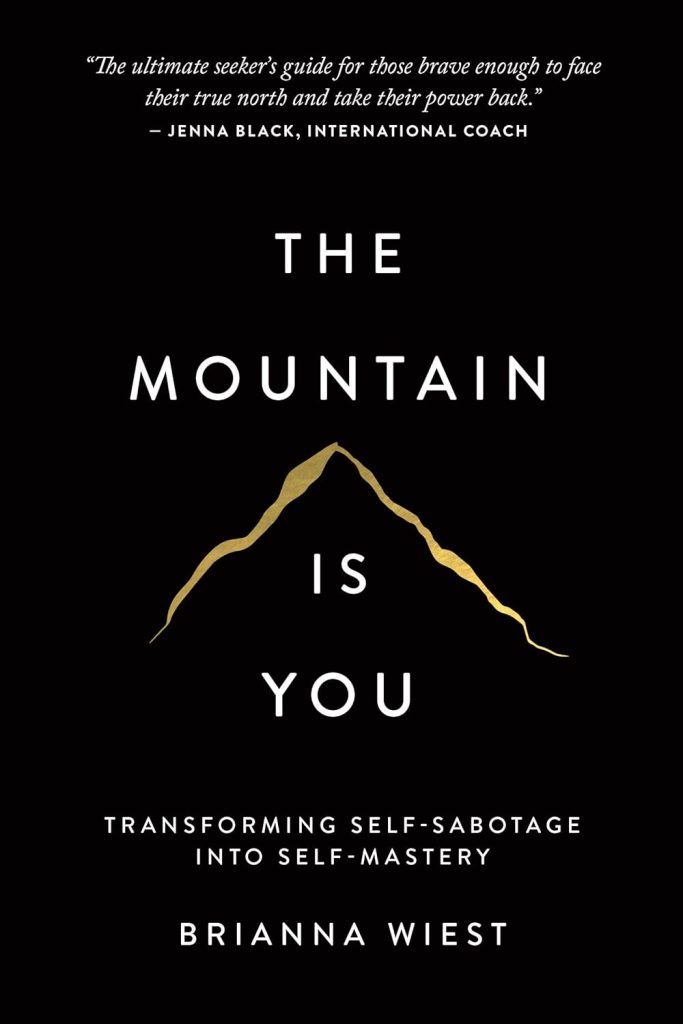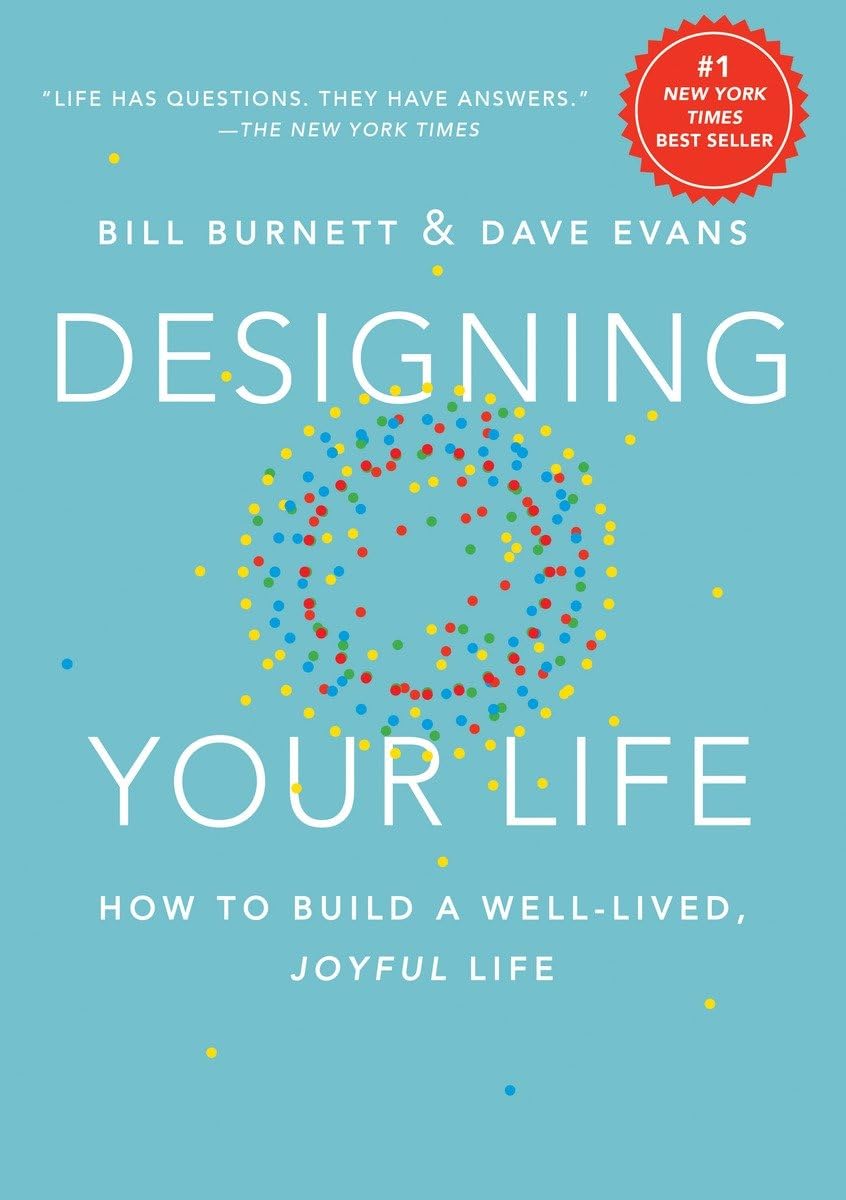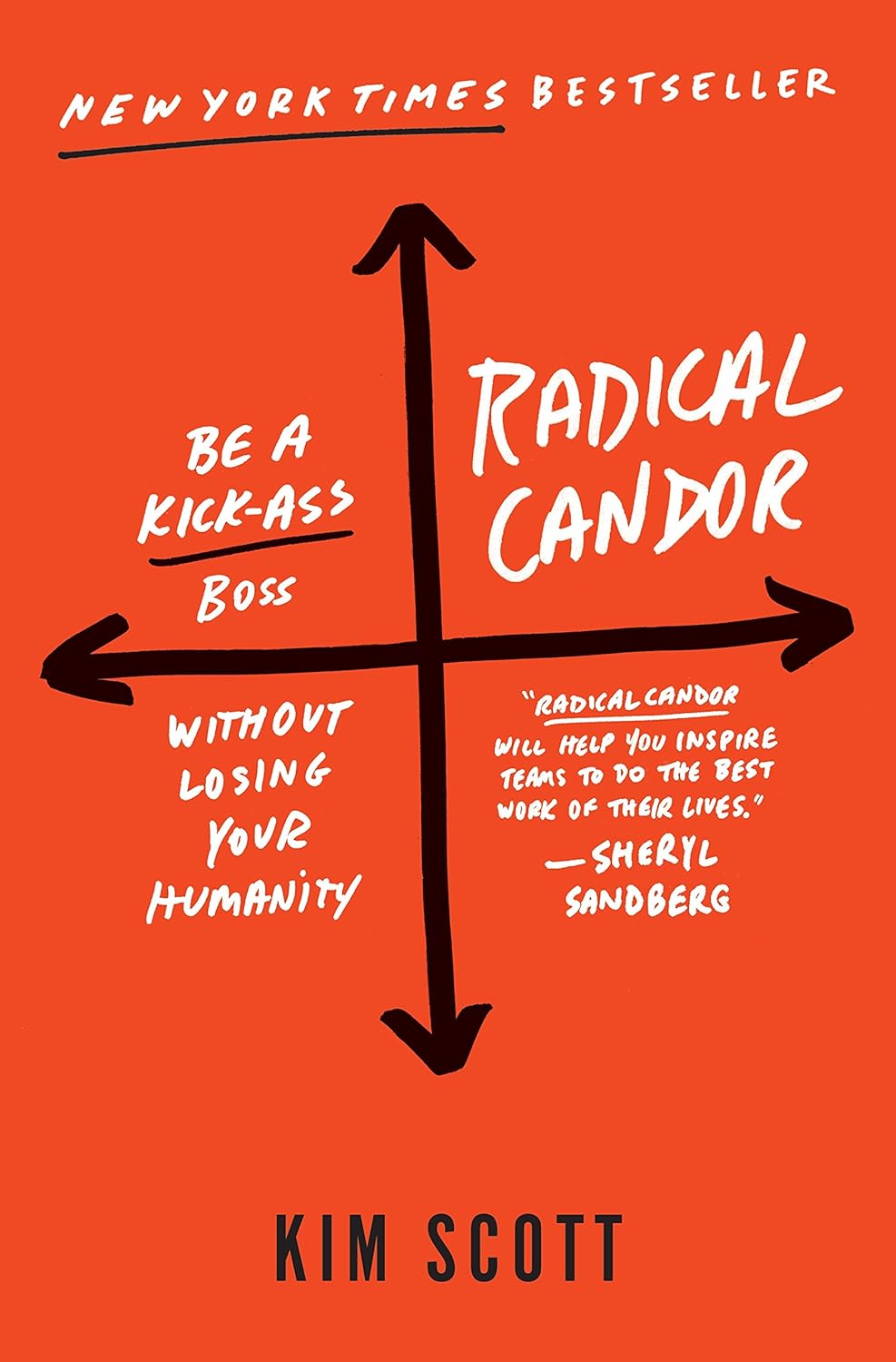
Buy The Book
The Mountain Is You: Transforming Self-Sabotage Into Self-Mastery

About
The book is a transformative self-help book that delves into the intricacies of self-sabotage and personal growth. Brianna Wiest, a renowned writer known for her profound insights into emotional intelligence and healing, uses her unique eloquence to guide readers on a journey toward self-mastery.
The book is structured around the metaphor of a mountain, symbolizing the personal challenges and internal conflicts individuals face. Wiest emphasizes that self-sabotage is not a reflection of self-hatred but a coping mechanism fulfilling unmet needs. Through deep psychological exploration, she encourages readers to identify and confront their unconscious fears and outdated belief systems that hinder progress.
Wiest asserts that true change begins with self-awareness and accountability, urging readers to break free from denial and embrace discomfort as a necessary step toward reinvention. The narrative is both a wake-up call and a source of hope, offering pragmatic tools and soul-searching guidance to help individuals overcome their internal obstacles.
“The Mountain Is You” is a compelling guide for anyone seeking to transform their life by understanding and conquering the self-imposed barriers that prevent them from reaching their fullest potential.

Spark
Learn
Review
✦ INTRODUCTION
Life often works in your favor, even when faced with adversity and change. Just as forest fires are vital for regrowth, your mind undergoes necessary periods of transformation. True growth occurs when you’re pushed to your limits, beyond comfort zones. Hitting rock bottom often signals an awakening, a chance to address long-standing issues. Like mountains formed from opposing forces, your challenges arise from conflicting needs within you—conscious desires versus unconscious barriers.
Mountains have long symbolized spiritual journeys and personal growth. They reflect the wisdom needed to reach your highest potential. The essence of being human is growth, mirrored in every aspect of life. Just as nature thrives through imbalance and imperfection, your flaws indicate untapped potential.
You may recognize your mountain—be it addiction, relationships, or vague anxiety. Often, the real obstacle is within, an unstable foundation affecting every area of your life. Chronic issues reflect internal struggles, accumulated over years of tiny traumas and coping mechanisms.
Your mountain blocks the life you want. Facing it is key to freedom and transformation. When you reach the breaking point, you’re at the threshold of your breakthrough. It’s time to release your old self, embrace change, and master yourself.
✦ THE MOUNTAIN IS YOU
In life, nothing holds you back more than your own actions and thoughts. If there’s a persistent gap between your current state and your desired goals, and your efforts to close this gap consistently meet resistance and discomfort, you are likely experiencing self-sabotage.
Self-sabotage may appear self-destructive or rooted in self-hatred. However, it usually fulfills an unconscious need. Overcoming it requires deep psychological work, identifying past traumas, releasing unprocessed emotions, and finding healthier ways to meet your needs. This is significant work that everyone must confront at some stage.
**SELF-SABOTAGE IS NOT ALWAYS OBVIOUS AT THE ONSET**
Consider Carl Jung’s childhood experience. After falling and hitting his head, he began fainting to avoid school—a place where he felt unhappy. This illustrates how self-sabotage can manifest as a coping mechanism when you lack better ways to deal with deeper issues. Your fears and attachments might similarly be symptoms of underlying problems.
**SELF-SABOTAGE IS A COPING MECHANISM**
Self-sabotage occurs when you avoid consciously addressing your deepest needs, often because you doubt your ability to handle them. You might undermine relationships due to a fear of loneliness or sabotage professional success because it conflicts with your true passions. Even your self-talk can suffer because believing in yourself would require vulnerability. These behaviors offer temporary relief but never truly resolve the underlying issues.
**SELF-SABOTAGE COMES FROM IRRATIONAL FEAR**
Your most self-destructive behaviors often stem from long-held, unexamined fears about yourself and the world. These fears manifest in various forms, such as anxiety about job security or commitment. Often, an abstract fear represents a real one, projected onto less likely scenarios as a safe way to express emotions. If you’re afraid of being a passenger in a car, the real fear might be losing control over your life. Recognizing and addressing these root fears is essential.
**SELF-SABOTAGE COMES FROM UNCONSCIOUS, NEGATIVE ASSOCIATIONS**
Self-sabotage is an indicator that your inner narrative is outdated or limiting. Your self-concept is shaped by external influences and personal experiences. When you self-sabotage, it’s often due to a negative association with achieving your goals. For example, if financial stability is elusive, revisit your earliest perceptions of money. Identifying and challenging these limiting beliefs is crucial for personal growth.
**SELF-SABOTAGE COMES FROM WHAT’S UNFAMILIAR**
Human beings naturally resist the unknown, associating it with a loss of control— even if the change is positive. This discomfort often leads to confusion, mistaking unfamiliarity for something inherently wrong. Overcoming this requires adjusting your psychological baseline and allowing yourself to grow beyond your comfort zone.
Ultimately, to overcome self-sabotage, you must identify the unconscious needs or fears driving your actions and address them with conscious intention. Embrace the discomfort of the unknown, challenge your limiting beliefs, and move toward the life you truly desire. Your mountain is not just a challenge but an opportunity for profound transformation.
✦ THERE ’ S NO SUCH THING AS SELF – SABOTAGE
When you consistently engage in actions that advance your life, they’re called skills. But when these actions hold you back, they’re labeled as self-sabotage. Both essentially perform the same function. Sometimes, this occurs by chance. You may become accustomed to a certain lifestyle and fail to imagine a different one. At times, you make choices out of ignorance, unaware that other options exist. You might accept what’s given because you don’t realize you can ask for more. Occasionally, you operate on autopilot for so long that you start believing you have no choice.
More often than not, it isn’t accidental. The habits and behaviors that seem destructive or limiting are cleverly devised by your subconscious to meet unfulfilled needs, displaced emotions, or neglected desires. Overcoming self-sabotage isn’t about trying to suppress your impulses; it’s about understanding the reasons they exist in the first place.
Self-sabotage is often misunderstood as a way to punish or harm yourself. On the surface, this appears true. Committing to healthier habits yet finding yourself indulging in fast food shortly after, conceiving a brilliant business idea but getting sidetracked, or letting fearful thoughts paralyze you during significant life changes all suggest a lack of intelligence or willpower. However, self-sabotage isn’t about self-harm; it’s a method of self-protection.
WHAT IS SELF-SABOTAGE?
Self-sabotage occurs when you have two conflicting desires. One is conscious, the other unconscious. You know how you want to progress, yet something keeps holding you back. When you encounter persistent, seemingly insurmountable problems in your life—especially when solutions seem simple yet impossible to maintain—you’re not dealing with big problems but significant attachments.
People have an incredible drive to pursue what they truly desire. This is evident across human life. Regardless of potential consequences, human nature tends to be self-serving. People have an almost superhuman ability to pursue what they feel compelled to do, regardless of who might be hurt or what risks might arise. Recognizing this, you realize that if something remains in your life, there’s a reason you want it there. The question is why.
Some struggle to understand why they can’t motivate themselves to start a business to achieve greater wealth, perhaps not realizing they hold a subconscious belief that wealth equates to egocentrism or dislike. Or maybe they don’t genuinely aspire to be wealthy. Perhaps they seek security and care, or they crave recognition for their art, but as this seems unlikely, they settle for a secondary dream that doesn’t truly motivate them.
Others claim they want success at any cost yet shy away from the work required to achieve it. Perhaps they understand, on some level, that success doesn’t guarantee happiness or likability. In fact, the opposite often holds true.
Success invites jealousy and scrutiny. Successful individuals aren’t loved as imagined; they are often criticized because envious individuals need to humanize them. Instead of pursuing “success,” many simply wish to be loved, yet their ambition threatens this desire.
Some can’t fathom why they repeatedly choose the “wrong” relationships, with patterns of rejection or commitment refusal. Maybe they’re unknowingly recreating dynamics from their youth, linking love with loss or abandonment.
✦ YOUR TRIGGERS ARE THE GUIDES T O Y OUR FREEDOM
Triggers are often misunderstood as obstacles to overcome, but they are truly indicators of where your healing needs to occur. When something provokes a strong emotional response, it is a sign pointing to an unresolved issue. Instead of avoiding or suppressing these reactions, use them as a compass guiding you towards growth and understanding.
Every time you feel a trigger, it’s an opportunity to delve deeper into yourself. Ask yourself what belief or past experience is being activated. Triggers often stem from past pain or unmet needs that have been internalized. By identifying the root cause, you can begin to dismantle the power they hold over you.
Triggers are not meant to punish you; they are signals that something inside is calling for your attention. They shine a light on the areas of your life where you feel out of control or powerless. By addressing these underlying issues, you can transform your triggers into tools for self-discovery and empowerment.
Understanding your triggers requires honesty with yourself. It means acknowledging that the discomfort you feel is not caused by external circumstances, but by your own perceptions and interpretations. This awareness allows you to reclaim your power, as you realize that the way you respond to triggers is within your control.
Once you identify what your triggers are trying to tell you, you can begin to heal the parts of yourself that are wounded. This might involve challenging limiting beliefs, processing past traumas, or simply allowing yourself to feel emotions that you have long suppressed. As you do this work, triggers will become less frequent and intense, as their underlying causes are addressed.
The goal is not to eliminate triggers altogether, but to change your relationship with them. When you see them as guides rather than enemies, you can approach them with curiosity and compassion. This shift in perspective not only reduces their impact but also opens the door to greater self-awareness and freedom.
Triggers often highlight the areas where you feel most vulnerable. By leaning into this vulnerability, you can uncover a deeper understanding of yourself and your needs. This process is not easy, but it is necessary for genuine growth and transformation.
When you confront your triggers head-on, you begin to dismantle the barriers they’ve created in your life. You learn to differentiate between your true self and the protective mechanisms you’ve built in response to pain. This clarity allows you to make choices that align with your authentic desires, rather than reacting out of fear or defense.
Ultimately, your triggers are not the enemy; they are the keys to unlocking your potential. By embracing them, you take the first step towards healing and liberation. This journey requires courage, but the reward is a life lived with greater awareness, peace, and self-acceptance.
Remember, each trigger is a message waiting to be understood. When you listen to what it has to say, you pave the way for profound personal change and the freedom to live as your true self.
✦ BUILDING EMOTIONAL INTELLIGENCE
Developing emotional intelligence is essential for navigating life’s challenges and enhancing your relationships. It begins with self-awareness, understanding what you feel and why you feel it. This means observing your emotions without judgment and recognizing their impact on your thoughts and actions.
Once you grasp self-awareness, the next step is self-regulation. This involves managing your emotional responses, not by suppressing them, but by learning to respond thoughtfully rather than react impulsively. Practicing self-regulation allows you to maintain control and make decisions that align with your values, even in stressful situations.
Empathy is another crucial component of emotional intelligence. It requires putting yourself in others’ shoes, understanding their emotions and perspectives. By developing empathy, you build stronger connections and improve communication, fostering more meaningful relationships.
Social skills are vital for effectively interacting with others. They include active listening, clear communication, and conflict resolution. By honing these skills, you can navigate social situations with ease, collaborate effectively, and lead with influence.
Motivation drives you to pursue goals with passion and perseverance. It’s about finding intrinsic reasons to achieve what matters most to you, rather than relying on external rewards. Cultivating motivation helps you stay focused and resilient, even when faced with setbacks.
To build emotional intelligence, practice mindfulness. Mindfulness helps you stay present and aware, allowing you to observe your emotions without becoming overwhelmed by them. Regular mindfulness practice can lead to greater emotional balance and clarity.
Reflect on your experiences to understand your emotional triggers and patterns. Journaling can be a powerful tool for this, helping you process your feelings and gain insights into your behavior. By reflecting regularly, you deepen your self-awareness and make conscious changes to improve your emotional responses.
Seek feedback from others to broaden your understanding of how your emotions and actions affect those around you. Constructive feedback can reveal blind spots and provide valuable perspectives that enhance your emotional intelligence.
Embrace the idea that emotional intelligence is a lifelong journey. It requires consistent effort and practice, but the rewards are immense. As you enhance your emotional intelligence, you’ll find greater fulfillment, resilience, and harmony in your life.
Remember, building emotional intelligence is not about perfection but progress. Each step you take towards understanding and managing your emotions better is a step towards a more empowered and authentic life. Focus on small, incremental changes, and over time, you’ll experience significant growth.
Ultimately, emotional intelligence allows you to live with greater intention and connection. By understanding and managing your emotions, you unlock the potential to lead a life that is not only successful but also deeply meaningful and aligned with your true self.
✦ RELEASING THE PAST
Letting go of the past is crucial for moving forward and embracing the life you desire. It starts with acknowledging that holding onto past experiences, especially painful ones, only keeps you anchored in old patterns. Recognize that your history does not define you; it’s simply a collection of experiences that have shaped your perspective.
To begin releasing the past, confront the emotions tied to it. Allow yourself to feel and process these emotions without judgment. This may involve revisiting memories and understanding the impact they have had on your current behavior and beliefs. It’s essential to let yourself grieve the losses and disappointments you’ve experienced.
Forgiveness is a powerful tool in this journey. Forgiving others, and most importantly, forgiving yourself, is not about condoning past actions but about freeing yourself from the burden of resentment and guilt. By forgiving, you release the hold that past events have on you, creating space for healing and growth.
Mindfulness can aid in releasing the past by helping you stay grounded in the present moment. Practice being aware of your thoughts and emotions without getting entangled in them. This awareness allows you to observe without judgment and choose how you want to respond, rather than reacting based on past conditioning.
Reframe your narrative by shifting your focus from what happened to what you learned. Every experience, even the painful ones, contains lessons that contribute to your growth. By viewing your past through the lens of learning, you empower yourself to see challenges as opportunities for development.
Create rituals that symbolize letting go. This might involve writing a letter to your past self, expressing everything you need to release, and then burning it as a physical act of letting go. Rituals can provide a sense of closure and signify your commitment to moving forward.
Surround yourself with support, whether it’s friends, family, or a therapist, who can offer guidance and encouragement. Sharing your journey with others can provide new perspectives and remind you that you are not alone in your experiences.
Releasing the past is not about erasing memories but integrating them into your life in a way that no longer holds power over you. It’s about accepting what has happened and making a conscious choice to focus on the present and future.
Remember, letting go is a process that takes time and patience. Be gentle with yourself as you navigate this journey. Celebrate small victories and acknowledge the progress you make along the way.
Ultimately, releasing the past allows you to step into the present with a sense of freedom and possibility. It opens the door to new experiences and helps you align with your authentic self, unburdened by the weight of what once was. Embrace this liberation and the chance to create a life that reflects who you truly are.
✦ BUILDING A NEW FUTURE
Creating a new future begins with a clear vision of where you want to go. This involves identifying your deepest desires and aspirations, not just what you think you should want. Take time to dream without limitations, allowing yourself to envision a life that truly excites and fulfills you.
Once you have a vision, set specific, achievable goals that align with it. Break these goals down into manageable steps, creating a roadmap that guides you forward. By setting clear intentions, you give yourself a direction and purpose, helping you stay focused and motivated.
Cultivate a mindset that supports growth and change. Embrace the belief that you are capable of creating the future you desire. This involves challenging limiting beliefs and replacing them with empowering thoughts that encourage you to take action and embrace new opportunities.
Surround yourself with positive influences that uplift and inspire you. This might include people, environments, or media that align with your vision and support your journey. Positive influences can reinforce your motivation and keep you aligned with your goals.
Take consistent action towards your goals, no matter how small. Progress is made through regular, intentional steps that move you closer to your desired future. Celebrate each milestone, recognizing that every step is a significant part of your journey.
Stay adaptable and open to change. As you move forward, circumstances and priorities may shift. Be willing to adjust your plans and explore new paths that may arise. Flexibility allows you to navigate challenges and seize unexpected opportunities.
Practice gratitude for where you are and what you have. Gratitude shifts your focus from what’s missing to what’s present, fostering a mindset of abundance and positivity. This perspective attracts more of what you desire and keeps you grounded in the present.
Visualize your future regularly, reinforcing your vision and goals in your mind. Visualization helps align your subconscious with your conscious desires, making your goals feel more attainable and real. Imagine the details of your future and the feelings associated with achieving it.
Invest in personal growth and learning. Seek out knowledge and experiences that expand your skills and understanding. Continuous learning keeps you evolving and prepared to embrace new challenges and opportunities as they arise.
Remember that building a new future is a journey, not a destination. It requires patience, persistence, and a willingness to evolve. Be kind to yourself throughout this process, understanding that growth takes time and effort.
Ultimately, creating a new future is about living intentionally, aligning your actions with your vision, and embracing the possibilities life has to offer. By taking deliberate steps towards your dreams, you craft a life that reflects your true self and opens the door to endless potential. Embrace the journey with courage and optimism, knowing that each day brings you closer to the future you envision.
✦ FROM SELF – SABOTAGE TO SELF – MASTERY
Transitioning from self-sabotage to self-mastery requires a deep understanding of the patterns that hold you back. Begin by identifying the habits and beliefs that lead to self-defeating behaviors. Acknowledge these tendencies without judgment, recognizing that they were once coping mechanisms that no longer serve you.
The path to self-mastery involves taking responsibility for your actions and their outcomes. Understand that you have the power to change and shape your life through conscious choices. This empowers you to shift from a victim mindset to one of control and intention.
Develop self-awareness by paying close attention to your thoughts and emotions. This awareness helps you catch self-sabotaging behaviors before they manifest. By observing your inner dialogue, you can begin to transform negative self-talk into positive affirmations that support your growth.
Set clear, intentional goals that align with your true desires. These goals should be specific, measurable, and attainable, providing you with a roadmap towards success. Break them down into actionable steps, and commit to taking consistent action towards achieving them.
Cultivate discipline and perseverance, essential traits for self-mastery. Discipline involves making choices that align with your long-term goals, even when faced with short-term temptations. Perseverance requires maintaining effort despite challenges or setbacks.
Practice self-compassion, understanding that mistakes and setbacks are part of the journey. Treat yourself with kindness and patience, learning from each experience rather than criticizing yourself. This attitude fosters resilience and encourages continuous growth.
Embrace change and adaptability in your pursuit of self-mastery. Life is dynamic, and the ability to adjust your plans and strategies is crucial. Stay open to new opportunities and be willing to modify your approach as you gain insights and experience.
Build a support system of individuals who encourage and challenge you. Surrounding yourself with positive influences can reinforce your commitment to self-mastery and provide valuable perspectives. Seek out mentors or peers who inspire and hold you accountable.
Implement daily practices that enhance your well-being and focus. This might include meditation, exercise, journaling, or other routines that center and energize you. These practices strengthen your mental and physical resilience, supporting your journey towards mastery.
Celebrate your progress and achievements, no matter how small. Recognizing your growth reinforces your commitment and boosts your motivation. Acknowledge each step forward as a testament to your dedication and capacity for change.
Ultimately, moving from self-sabotage to self-mastery is about aligning your actions with your highest potential. It’s a journey of self-discovery and empowerment, where you learn to harness your strengths and address your weaknesses. By committing to this path, you cultivate a life of intention, freedom, and fulfillment.
Embrace the journey with courage, knowing that each day brings you closer to the person you aspire to become. Through dedication and self-awareness, transform your life from one of limitation to one of limitless possibility.
For People
– Individuals seeking personal growth
– Those struggling with self-sabotage
– Mental health advocates
– Coaches and therapists
– Readers interested in self-help
Learn to
– Understanding the roots of self-sabotage
– Learning to build emotional intelligence
– Developing strategies for personal mastery
– Recognizing and overcoming limiting beliefs
– Cultivating resilience and self-awareness









